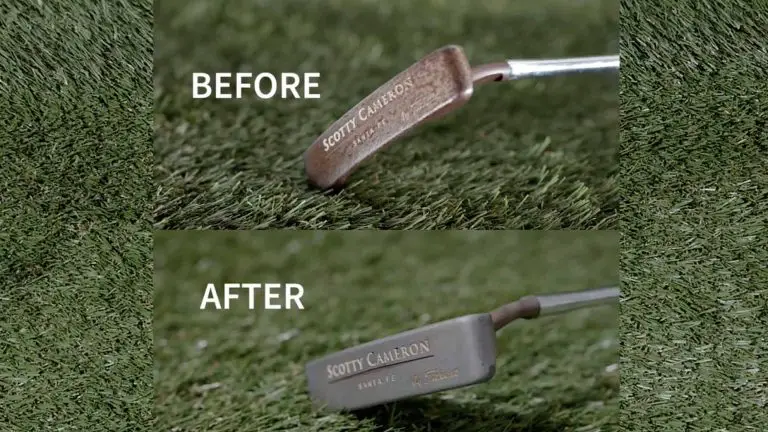Why Are Golf Carts Left Hand Drive

Golf carts have become an essential part of the golfing experience, whisking players across sprawling courses and carrying their equipment with ease. As you step onto a golf cart, you may notice something peculiar – the steering wheel positioned on the left side. Have you ever wondered why golf carts are predominantly left-hand drive? In this article, we will unravel the intriguing reasons behind this design choice.
Understanding the driving position in golf carts is not only a matter of curiosity but also plays a crucial role in enhancing safety, convenience, and compatibility. Delving into the historical background, we will explore how the emergence of automobile manufacturing and design influenced the early versions of golf carts. From there, we will delve into the safety considerations that led to the prevalence of left-hand drive, ensuring optimal visibility on the course and alignment with road traffic regulations.
Ergonomics and accessibility are also paramount in creating a comfortable driving experience. By analyzing the positioning of controls and the majority of golfers’ dominant hand, we can unravel why left-hand drive is the preferred configuration. Furthermore, the standardization of left-hand drive across the industry and the market influence in different regions will shed light on the widespread adoption of this driving position.
Join us as we navigate the twists and turns of the golf cart design world, uncovering the reasons behind the left-hand drive phenomenon and gaining insights into the factors shaping this integral aspect of the golfing experience.

Historical Background
To understand the origins of left-hand drive in golf carts, we need to take a step back in time. The early versions of golf carts were primarily influenced by the emergence of automobile manufacturing and design. As cars gained popularity and became more accessible, golf cart manufacturers sought inspiration from automotive trends, including the placement of the steering wheel on the left side.
Safety Considerations
One of the key reasons for the left-hand drive configuration in golf carts is safety. Golf courses often have a vast expanse of greenery, making it crucial for drivers to have enhanced visibility while navigating the course. By placing the driver on the left side, golfers can have a better view of the path ahead, allowing them to anticipate potential hazards and other players. Additionally, aligning with road traffic regulations in left-hand drive regions ensures a consistent approach to driving on and off the golf course.
Ergonomics and Accessibility
The ergonomics of a golf cart play a vital role in ensuring a comfortable and convenient driving experience for golfers. Placing the driver on the left side allows for an optimal positioning of controls and easy reach for the majority of golfers, who are right-handed. With the steering wheel and essential controls positioned on the left side, golfers can operate the cart comfortably, facilitating smoother maneuvers and enhancing overall control.
Standardization and Compatibility
Standardization is another factor that contributes to the prevalence of left-hand drive in golf carts. Across the golf cart manufacturing industry, there is a consensus on the adoption of left-hand drive as the standard configuration. This standardization ensures compatibility among different golf cart models and simplifies maintenance and repairs. Golf course operators and maintenance staff can easily switch between various carts without having to adapt to different driving positions, thus streamlining operations.
Market Influence
The market also plays a significant role in the prevalence of left-hand drive golf carts. Certain regions, such as North America and Europe, have a dominant preference for left-hand drive vehicles due to their road traffic regulations and cultural norms. Consequently, golf carts designed for these markets align with the prevailing driving position preferences. This market influence further solidifies the prominence of left-hand drive golf carts worldwide.
Golf Course Layout and Design
The layout and design of golf courses heavily influence the choice of left-hand drive in golf carts. Golf course architects carefully plan the direction of each hole and strategically position hazards and features. With left-hand drive golf carts, golfers can navigate the course more efficiently, ensuring the best possible playing experience. The consistent driving position across all golf carts simplifies navigation and allows players to focus on their game.
Manufacturer’s Influence
Golf cart manufacturers have a significant impact on the design choices of their vehicles. They consider customer expectations and preferences when deciding on the driving position. Extensive research and feedback from golfers contribute to the decision to opt for left-hand drive as the standard configuration. Manufacturers strive to create golf carts that feel familiar and intuitive to drivers, drawing inspiration from traditional cars and aligning with established industry standards.
Adaptation from Traditional Vehicles
The influence of traditional road vehicles cannot be overlooked when considering the left-hand drive configuration in golf carts. Many golfers are already accustomed to driving cars with left-hand drive, especially in regions where it is the prevailing norm. By aligning the golf cart driving position with that of traditional vehicles, golfers can seamlessly transition from driving a car to operating a golf cart without having to adjust to a different configuration.
These are the primary factors behind the prevalence of left-hand drive in golf carts. By understanding the historical, safety, ergonomic, and market considerations, we can appreciate the thoughtful design choices made by golf cart manufacturers. The left-hand drive configuration enhances safety, ensures compatibility, and provides a familiar driving experience for golfers, ultimately contributing to an enjoyable and efficient game on the golf course.
Safety Regulations
In addition to the general safety benefits, the left-hand drive configuration in golf carts aligns with specific safety regulations imposed by local authorities. These regulations are designed to enhance overall course safety and ensure a consistent approach to golf cart operation. By adhering to safety regulations, golf courses can minimize accidents and create a secure environment for players and staff.
Regional Variations
While left-hand drive is the dominant configuration in many regions, it’s essential to acknowledge that there are variations based on cultural and practical reasons. In some countries, such as the United Kingdom, right-hand drive golf carts are prevalent due to the country’s tradition of driving on the left side of the road. Understanding these regional variations helps accommodate golfers from diverse backgrounds and ensures a comfortable experience for all.
Electric Golf Carts
The shift from gas-powered to electric golf carts has brought about new considerations in design and driving position. Electric golf carts offer numerous advantages, including eco-friendliness, reduced noise pollution, and improved efficiency. As manufacturers embrace electric technology, they also evaluate the driving position to optimize ergonomics, accessibility, and battery placement, thereby enhancing the overall performance and user experience of electric golf carts.
Golf Cart Innovations
Innovation in golf cart technology is an ongoing process, with manufacturers constantly exploring new possibilities to enhance the golfing experience. Advancements such as autonomous golf carts and smart features introduce exciting opportunities for convenience and efficiency. With these innovations, the driving position and control mechanisms may undergo further refinements, incorporating technologies like sensors, GPS, and connectivity to offer enhanced navigation and user-friendly interfaces.
Future Trends
As golf cart technology evolves and preferences shift, the driving position in golf carts may also witness changes in the future. Advancements in electric and autonomous technology, as well as shifts in cultural norms, may influence the design choices made by manufacturers. The integration of artificial intelligence, renewable energy, and advanced safety features may shape the driving experience and position in golf carts in the years to come.
In conclusion, the prevalence of left-hand drive in golf carts is driven by historical influences, safety considerations, ergonomic factors, market preferences, and the need for standardization and compatibility. By understanding these factors, we can appreciate the thoughtful design choices made by manufacturers to provide a safe, comfortable, and familiar driving experience for golfers. Whether you’re cruising along the fairways or maneuvering around hazards, the left-hand drive configuration ensures you can focus on your game and enjoy the scenic beauty of the golf course.





